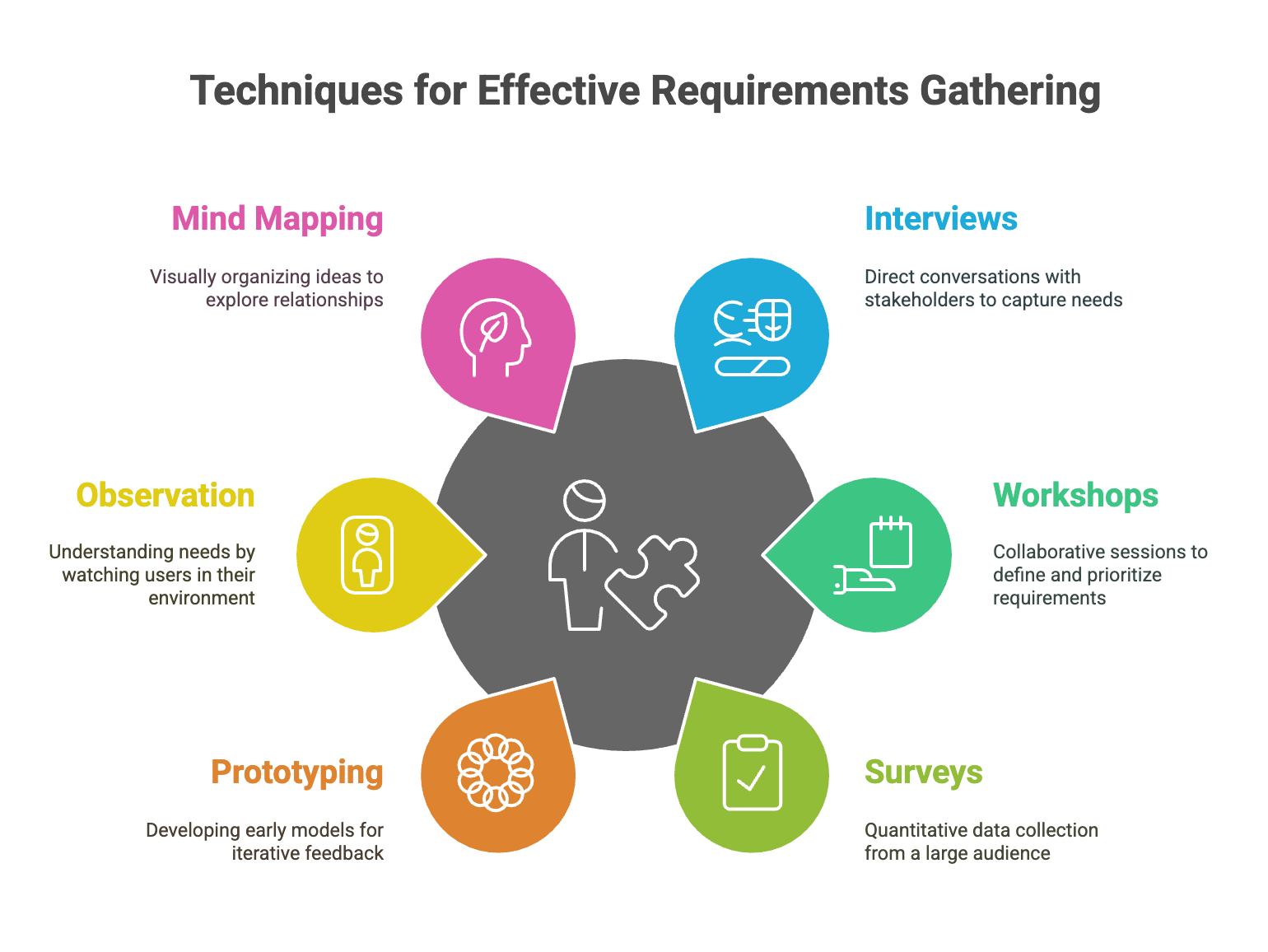The success of an initiative largely depends on how well its requirements are defined, understood, and managed. The process of developing requirements is critical to the foundation of any project, product, or service, as it lays the groundwork for all subsequent activities. Without clear and concise requirements, projects are at risk of missing their goals, overrunning budgets, and exceeding timelines. This article provides a comprehensive guide on developing requirements, offering insights into essential tools and methodologies that can streamline this process during the planning phase of your initiative.
What You Need to Know About Requirements
What is a Requirement?
A requirement is a documented need or expectation that a particular system, product, or service must fulfill. These are essential building blocks that define what the outcome of a project should achieve.
In its simplest form, requirements can be categorized as functional and non-functional, but there are also other categories: business requirements, user requirements, technical requirements, regulatory and compliance requirements. Below is a list of definitions:
- Functional Requirements: These describe the specific functions or behaviors that a system or product must have. They define what the system should do, such as data processing, calculations, business rules, or user interactions.
- Non-Functional Requirements: These define criteria that judge the operation of a system rather than specific behaviors. They include performance, reliability, scalability, security, and usability requirements.
- Technical Requirements: These specify the technical aspects that need to be met, such as software, hardware, network configurations, or development tools.
- Business Requirements: These capture the high-level needs of the organization or stakeholders, like business objectives, rules, and processes.
- User Requirements: These are needs or expectations defined by the end-users. They often take the form of user stories or use cases in Agile methodologies.
- Regulatory and Compliance Requirements: These involve industry regulations, legal obligations, and standards that the system or product must adhere to.
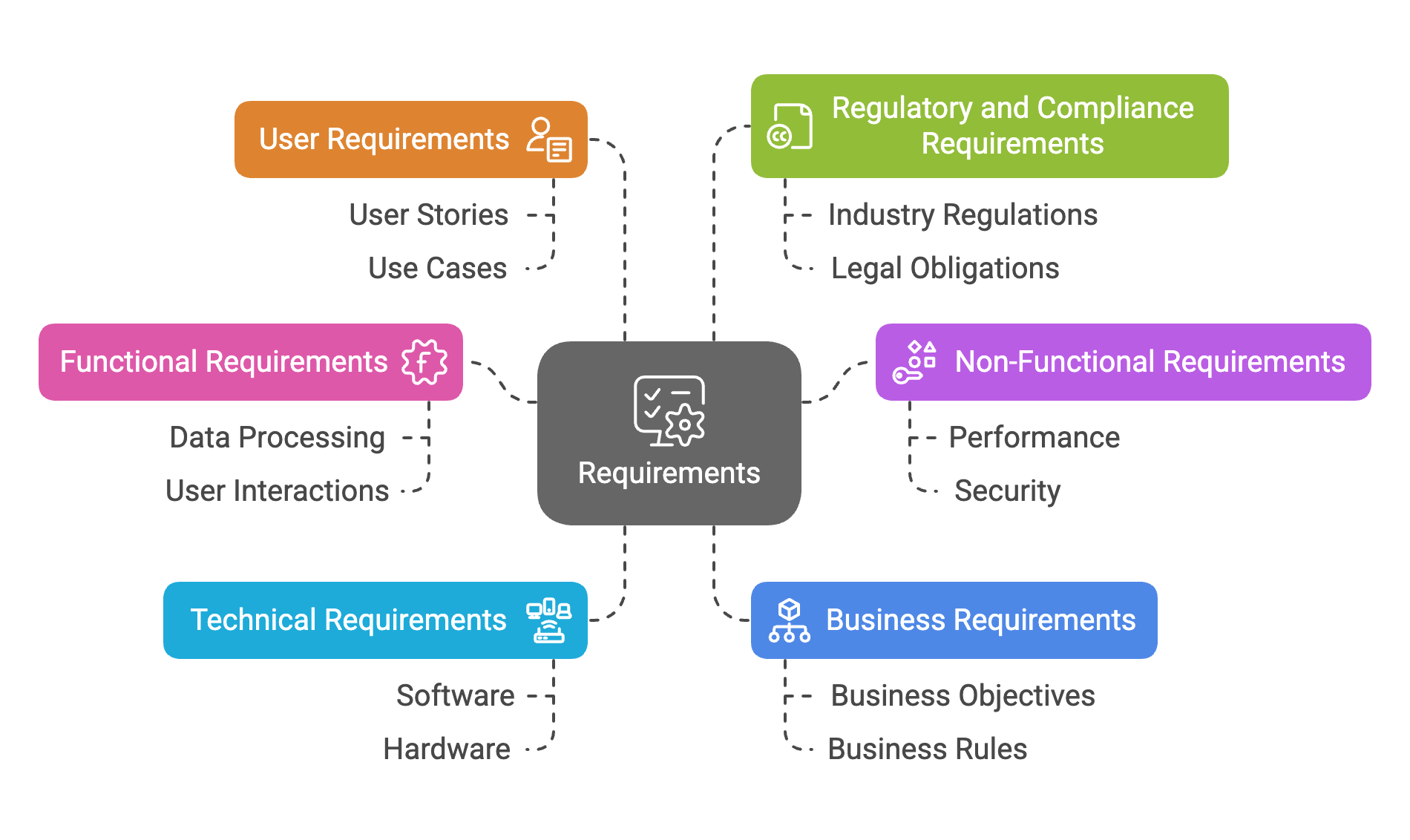
The Role of Requirements in Projects
A requirement states what a product or service must do and how well it must do what it was. In that sense, they serve as the foundation for guiding project activities from inception to delivery. They influence decisions regarding scope, budget, and timelines. During the initiation and planning stages, eliciting, analyzing, specifying, and validating requirements are critical steps to ensure that the project delivers what stakeholders expect. These requirements not only define the scope of the project but also serve as benchmarks against which the project's progress and success are measured.
Methods for Gathering Requirements
Gathering requirements is a nuanced process that involves eliciting and capturing the needs and expectations of stakeholders through various techniques, each suited to different project environments. Below are some of the most well-known methods:
- Interviews: Engaging with stakeholders to capture their expectations and needs through direct conversations.
- Workshops: Collaborative sessions where stakeholders collectively define and prioritize requirements.
- Surveys/Questionnaires: Gathering quantitative data from a large audience to identify common requirements and trends.
- Prototyping: Developing early models or versions of the product to refine requirements through iterative feedback.
- Observation: Understanding needs by observing users in their work environment to gather contextual insights.
- Mind Mapping: Visually organizing information and ideas to explore and capture relationships between different requirements.
- Brainstorming: Facilitating group discussions to generate a wide range of ideas and potential requirements.
These methods, among others, help ensure that the requirements are well understood, documented, and agreed upon by all stakeholders.
Tools for Developing Requirements During Planning
Developing Requirements implies specifying, prioritizing, and validating requirements. Three of the tools we consider most effective for advancing in this stage are the Product Vision Box, the Product Breakdown Structure, and User Stories along with the Product Backlog.
The Product Vision Box
The Product Vision Box is a creative tool designed to help teams clarify the high-level vision of the product, service, or outcome they intend to deliver. Imagine your product on a store shelf—what would its packaging look like? This exercise forces teams to distill the essence of their product into a compelling and succinct format, focusing on core features, benefits, and value propositions. The Product Vision Box sets the stage for more detailed requirement development by providing a tangible and shared understanding of the product's goal.
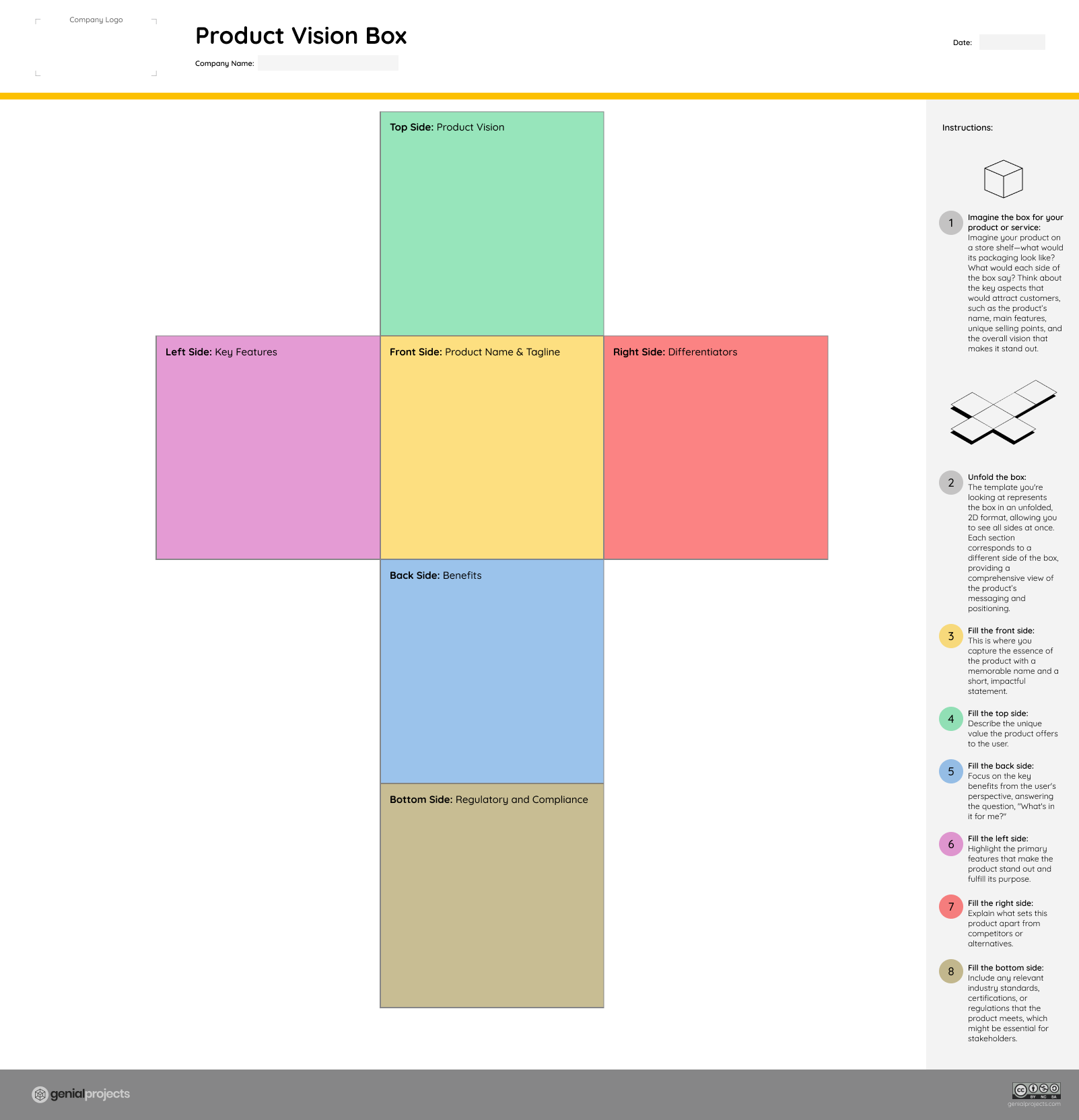
Free Product Vision Box Template available on our website.
The Product Breakdown Structure (PBS)
Once the vision is clear, the next step is to break down the product into its constituent parts using the Product Breakdown Structure (PBS). This hierarchical decomposition organizes the product into smaller, manageable components, each representing a core or enabling element of the final deliverable. The PBS helps in identifying all necessary components, ensuring nothing critical is overlooked, and lays the groundwork for further detailing these elements into work packages.
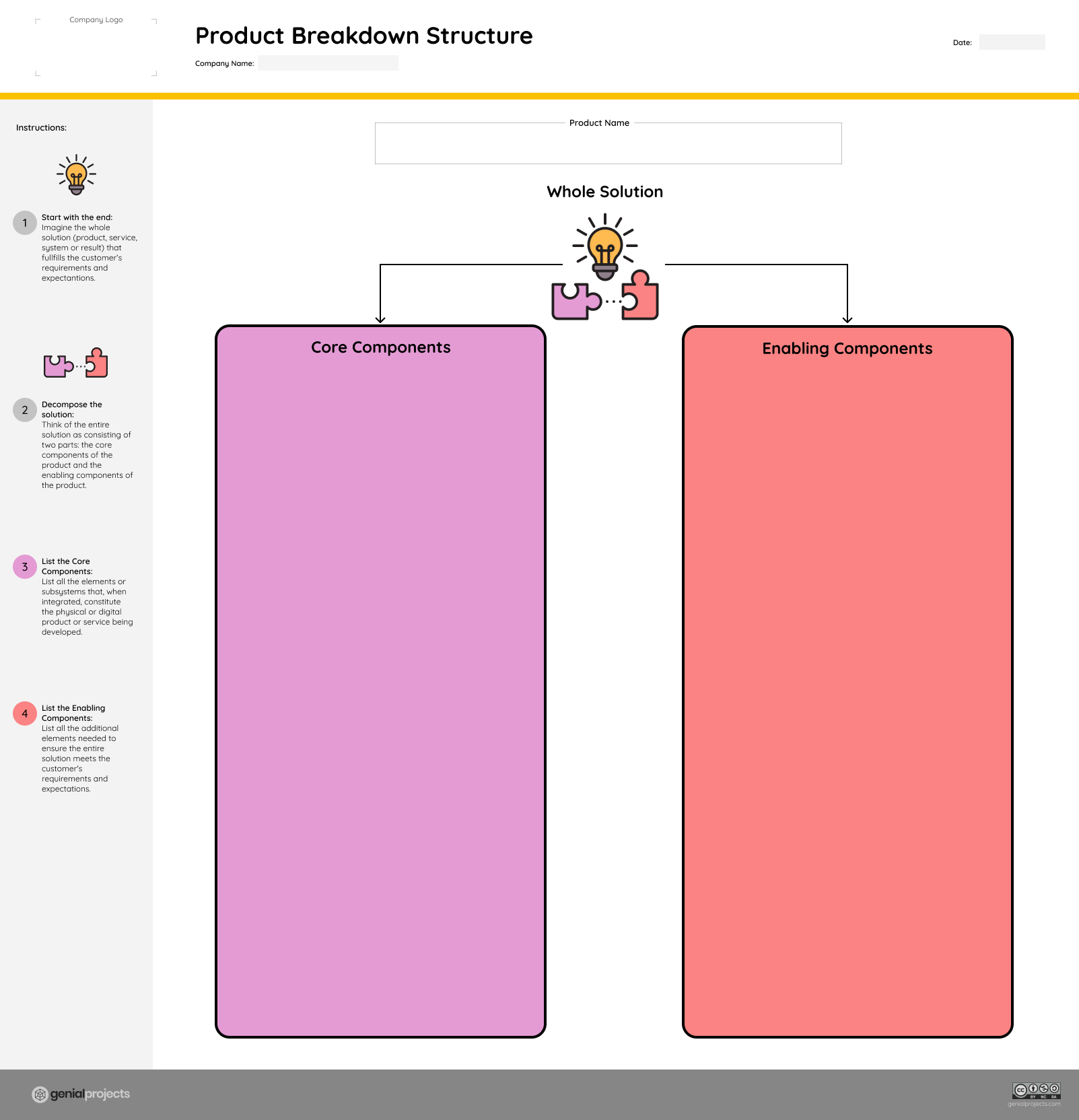
Free Product Breakdown Structure Template available on our website.
User Stories and The Product Backlog
User Stories and the Product Backlog are crucial tools, particularly in Agile environments, for managing and refining requirements throughout the project lifecycle. User Stories are short, simple descriptions of features from the perspective of the end user, often following the format: "As a [user], I want [functionality], so that [benefit]." These stories are collected in the Product Backlog, a dynamic list of all desired features and enhancements, prioritized by value and business impact. The backlog is continually refined as the project progresses, ensuring that the most critical requirements are addressed first.
If you would like to explore this topic further, we recommend reading our article: How to Build a Sprint Backlog.
From the Product Breakdown to the Work Breakdown
To effectively tackle the development of requirements, we propose a straightforward guide that consists of the following steps:
Step 1: Get Alignment with a Product Vision Box
The first step in structuring your project is to achieve alignment among stakeholders using the Product Vision Box. This tool helps ensure that everyone has a unified understanding of what the product aims to achieve and the key features it should include. By collaboratively defining this vision, the project team can avoid misalignments and ensure that the ensuing development efforts are focused on shared goals.
Step 2: Develop a Product Breakdown Structure (PBS)
With a clear vision in place, the next step is to develop a Product Breakdown Structure (PBS). The PBS organizes the product into its fundamental components, serving as a blueprint for the project. This structure aids in identifying the work packages necessary to build each component, which is essential for project planning and resource allocation.
Step 3: Develop a Work Breakdown Structure (WBS)
Following the PBS, the Work Breakdown Structure (WBS) translates the product components into specific tasks or deliverables. The WBS is organized around milestones, grouping related tasks into phases or stages of the project. This ensures that work is structured in a way that aligns with the project’s timeline and resource availability, facilitating effective project management.
Step 4: Structure the Product Backlog
Finally, for projects following Agile methodologies, structuring the Product Backlog becomes a critical step. The backlog should be populated with User Stories derived from the components identified in the PBS and WBS. In Agile, the backlog is continually refined, allowing for iterative development and continuous improvement. However, this concept is not limited to Agile. In traditional development approaches, a product backlog can also be established at the beginning of the project or at the start of each project phase. This backlog can then be managed through a formal change management process, ensuring that any adjustments are systematically evaluated and incorporated.
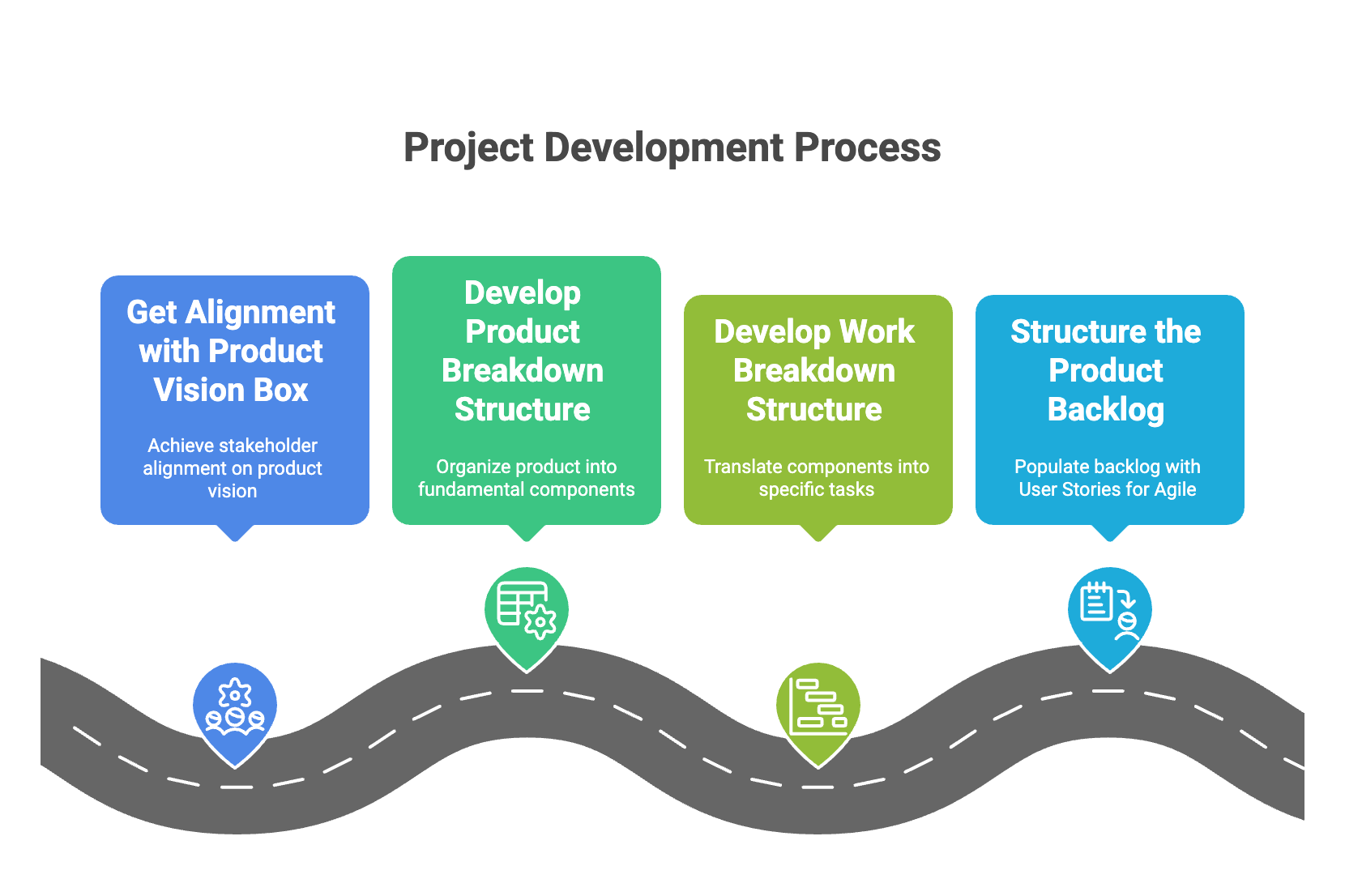
Practical Tips for Effective Requirement Development
Common Pitfalls and How to Avoid Them
One of the most frequent errors in requirement development is under-documenting or over-documenting requirements. Documentation is essential regardless of whether the project follows a predictive or adaptive development approach. Both extremes—too little or too much documentation—can negatively impact project performance. To address this, we propose a four-step guide that helps ensure requirements are documented in a balanced and effective manner.
The second common pitfall in requirement development is related with scope creep, where new requirements are added without proper evaluation, leading to budget and timeline overruns. To avoid this, it's crucial to have a clear change management process in place that requires formal approval for any new requirements.
Another common issue is the lack of stakeholder engagement, which can result in incomplete or misunderstood requirements. Regular stakeholder reviews and feedback sessions can mitigate this risk, ensuring that requirements remain aligned with expectations.
Best Practices for Continuous Refinement
Continuous refinement of requirements is essential to adapt to changing project circumstances. This is particularly important in Agile projects, where requirements evolve as the product is developed. To maintain a focus on the most valuable requirements, regularly prioritize and re-prioritize the backlog based on stakeholder feedback and business needs. Additionally, maintain clear and consistent documentation throughout the project, ensuring that any changes are accurately reflected in the project’s requirements.
In predictive development approaches, it is also crucial to review and adjust requirements during project execution. This necessitates a robust change management process to ensure that any modifications are systematically evaluated and implemented. Proper change control helps maintain alignment with project goals and minimizes disruptions caused by unplanned changes.
Key Takeaways
Understanding and developing robust requirements are fundamental to successful project management. Here are the key ideas to remember:
- What is a requirement and how it is categorized: Requirements define what a product or service must do and are categorized to guide project activities effectively.
- Why requirements are important in projects: They serve as the foundation for planning, influencing scope, budget, and timelines, and are crucial for aligning stakeholder expectations.
- The difference between gathering and developing requirements: Gathering involves eliciting and capturing requirements, while developing includes specifying, prioritizing, and validating them throughout the project lifecycle.
- Our four-step guide to requirement development: This guide saves time and energy, ensuring that requirement documentation is balanced and neither too sparse nor excessive. So, we suggest:
- Step 1 - Get Alignment with a Product Vision Box
- Step 2 - Develop a Product Breakdown Structure (PBS)
- Step 3 - Develop a Work Breakdown Structure (WBS)
- Step 4 - Structure the Product Backlog
- Requirements are not immutable: Changes are inevitable, but what’s important is how those changes are managed. Effective change management processes are key to maintaining project alignment and success.
